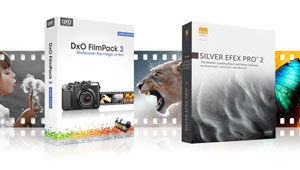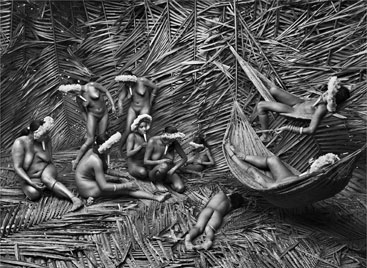It is said that Sebastião Salgado only switched to digital photography when he was certain that he still can achieve that film-like look. Many would argue there’s no more difference between the look of processed, digital bytes and film. Salgado, however, though shooting digital, counts on DxO FilmPack to keep his old trusted Kodak Tri-X film’s look and feel.

It’s just my unimportant opinion, but this software has a wonderful grain rendering and matches film very closely. Gets the job done 9.9 out of 10.
The download will include the DxO FilmPack plugin for Photoshop, Photoshop Elements, Lightroom and Aperture, giving you a completely effortless digital darkroom without losing the grain and contrast characteristic of black-and-white signature prints.
Just do as Salgado does, this veritable legend in black-and-white film photography. But he doesn’t choose the easy route. With the help of specialists he pinpointed a method for exactly reproducing the same results as for film photography.

Nevertheless, thanks to DxO FilmPack this diehard film photographer has found a system that suits him and allowed him a smooth transition to digital.
DxO FilmPack offers the film looks you can think of, be it positive and negative color films or black and whites: all the Fujifilms, Kodaks and Polaroïds — even the venerable Ilfords.
As an icing on the cake you get toning effects. The technique of toning involves applying chemical products to images printed on silver-halide paper to produce a particular global hue, such as sepia tones. The effects are especially pronounced when applied to black-and-white originals.
Sure there are other options to take the digital out of digital photography, such as:
- Alien Skin Exposure 4: While not on par with DxO Filmpack, Exposure 4 is a more playful way to give your digital files a more film-like look, thanks to filters such as dust and scratches, blur caused by plastic lenses, early photographic processes including Autochrome, Calotype and Daguerreotype, and so forth. Not what Salgado would use, but if you like photo apps on a more serious level, then this might be the editing software to go for. An added bonus is the grain control in highlights, midtones and shadows.
- Nik Silver Efex Pro 2: You’re not a serious black-and-white photographer if Silver Efex is not installed on your computer. A serious program for serious photographers — that might slow down your machine, however. Offering a 15-day trial, you get lots of manual parameters to control and 18 emulated film types. Costing nearly twice as much as DxOFilm Pack Expert, I’d still go for the cheaper one with the nicer workflow and ease of use.
- Nik Color Efex Pro 4: This list wouldn’t be complete without Nik’s color emulating software that especially worthwhile when you don’t have any other photo manipulation program. You get wonderful black-and-white photos when working in Color Efex and then opening them in Silver Efex. Color Efex, however, is less about that film-like look and more about altering and enhancing your digital images in a way you didn’t think was possible.
- TrueGrain: Well that’s the dark horse. You can’t go wrong for $49.95 only. TrueGrain is a stand-alone software and all about the correct grain. Each film includes native spectral response curves as well as measured curves for one or more color filters. TrueGrain’s extensive grain library allows you to accurately recapture the aesthetics of particular film stocks — including “lost” films. A plus: Lightroom can be configured to use TrueGrain as an external editor. Try the demo mode, works just like the purchased and registered product, absent the ability to save your work.
You can also use the film grain and noise addition filters in Photoshop, Lightroom and Aperture, but when it comes to film-like emulation, they don’t give the same look and feel as shooting with high-speed black-and-white film does. Neither do DxO FilmPack and Silver Efex Pro 2. But they’re pretty close to the real thing, at the tip of your fingertip.
Wanna bet that no one will be able to tell digital from “real”?


